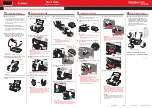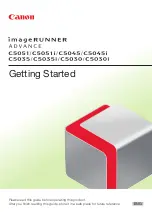
11
Grain orientation
Use the following table to compare the weights of various types of card stock.
Depending on the printer, material thicker than 0.30 mm (0.012 in.) may present feed reliability problems, and material
thicker than 0.17 mm (0.007 in.) may reduce print quality. Contact your supplier to determine the weight of any card stock
you currently use.
See the individual printer specifications in this document for more information about the card stock weights your printer
supports.
Grain orientation
Grain refers to the alignment of the paper fibers in a sheet of paper. Grain is either grain short, running the width of the
paper, or grain long, running the length of the paper.
The orientation of the grain contributes to the rigidity of card stock and affects feed reliability. The recommended grain
orientation depends on the weight of the stock and whether the printer feeds the stock short-edge first or long-edge first.
For lighter card stocks, grain long is recommended to reduce potential curl problems. Curl may decrease the ability of the
form to move reliably through the printer.
Most printers feed paper short-edge first. If your printer supports larger paper sizes, such as 11x17 in. or A3, it may feed
some paper sizes long-edge first. See your printer documentation for more information.
Card stock weights comparison guide
Metric
equivalent
(g/m
2
)
Basis weight (lbs/ream)
Bond
431.8 x
558.8 mm
(17 x 22 in.)
Offset
635 x
965.2 mm
(25 x 38 in.)
Cover
508 x
660.4 mm
(20 x 26 in.)
Printing
Bristol
571.5 x
889 mm
(22.5 x 35 in.)
Index
Bristol
647.7 x
774.7 mm
(25.5 x 30.5 in.)
Tag
609.6 x
914.4 mm
(24 x 36 in.)
75
20
50
–
–
–
50
90
24
60
–
–
–
–
105
28
70
–
–
–
–
108
29
–
40
–
–
–
118
31
80
–
–
–
–
120
32
–
–
–
67
74
131
35
90
–
–
–
–
135
36
–
50
–
–
–
148
39
100
–
–
–
–
163
43
–
60
–
90
100
176
47
120
65
–
–
–
199
53
–
–
110
110
–
203
54
–
–
–
–
125
Card stock weights may vary ± 5%.












































